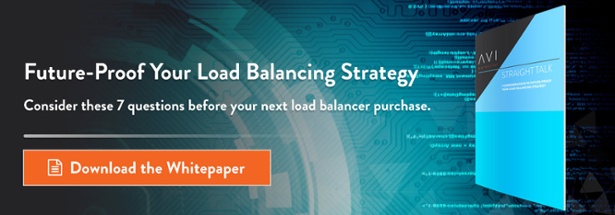The way modern enterprises run their computing is changing at a rapid pace. With infrastructure choices and application architectures favoring flexibility above all else, legacy application delivery controllers (ADCs) are unable to keep up with the changing requirements.
Application-centricity combined with continuous delivery and automation of IT and operations are top priorities. With application owners seeking public-cloud-like simplicity, and IT teams falling under pressure to reduce wait times to provision applications and updates, legacy ADCs are proving to be frustratingly inflexible for a number of reasons such as:
- They are rigid hardware appliances and cannot scale on-demand
- They lack visibility into app performance and end-user experience
- They cannot cater to webscale apps and multi-cloud deployments
- They are difficult to provision and expensive to procure
Enterprises, therefore, are looking at software load balancers that enable them with flexibility and agility that the traditional ADCs simply cannot deliver.
Software-only Load Balancing: Getting Started
Before shopping for a software load balancer, you’ll need to assess your current enterprise application services capabilities and identify gaps that may need to be addressed.
This handy shortlist may help you get started:
- Do you make frequent changes to your ADC config?
- Do you app change frequently?
- Can your current load balancer automatically scale up or scale down with traffic?
- Are you spending a fortune on proprietary appliances when you could leverage the evolution of standard x86 servers?
- Are you able to scale load balancers without procuring additional hardware appliances?
- Are you able to centrally control your load balancers across multiple cloud environments?
- Do your application teams have the ability to self-provision their own load balancers?
Key Considerations When Choosing a Software Load Balancer
The following is a list of criteria that will be helpful in identifying key areas of concern that should be addressed when choosing a software load balancer:
- Reducing total cost of ownership (TCO) of load balancing solutions
- Centralized management and control of distributed pool of load balancers
- Dynamically scale up or scale down load balancers in response to real-time traffic
- Troubleshoot applications in minutes without needing log files, TCP dumps etc.
- Gaining application insights on performance, security posture, and end users
- Accelerate application rollouts
- Automate load balancing and provisioning tasks
- Gain full visibility and monitor all virtual services in the environment
- Record and replay transactions to view round-trip times and performance issues
- Simplify multitenancy for internal groups without buying more appliances
- Deliver policy-driven self-service to lines of business for app services
- Improve security – dynamic DDoS protection, app isolation, micro-segmentation
- Extend application services to dev/test use cases painlessly
- Provide per-app load balancing dynamically where appropriate
- Enable role-based console access to internal customers to monitor applications
Software-defined Architecture for the Modern Enterprise
With application-centric enterprises shifting toward more nimble operations and continuous delivery models, legacy ADCs simply do not have the flexibility that is needed in the current environment.
The Avi Vantage Platform uses a software-defined architecture for application services and brings public-cloud-like simplicity and flexibility to application services such as load balancing, application visibility and analytics, autoscaling, and complete REST API-driven automation. Avi Vantage runs on any x86 servers (VM, bare metal, or container) and scales up and down automatically in response to application traffic.



